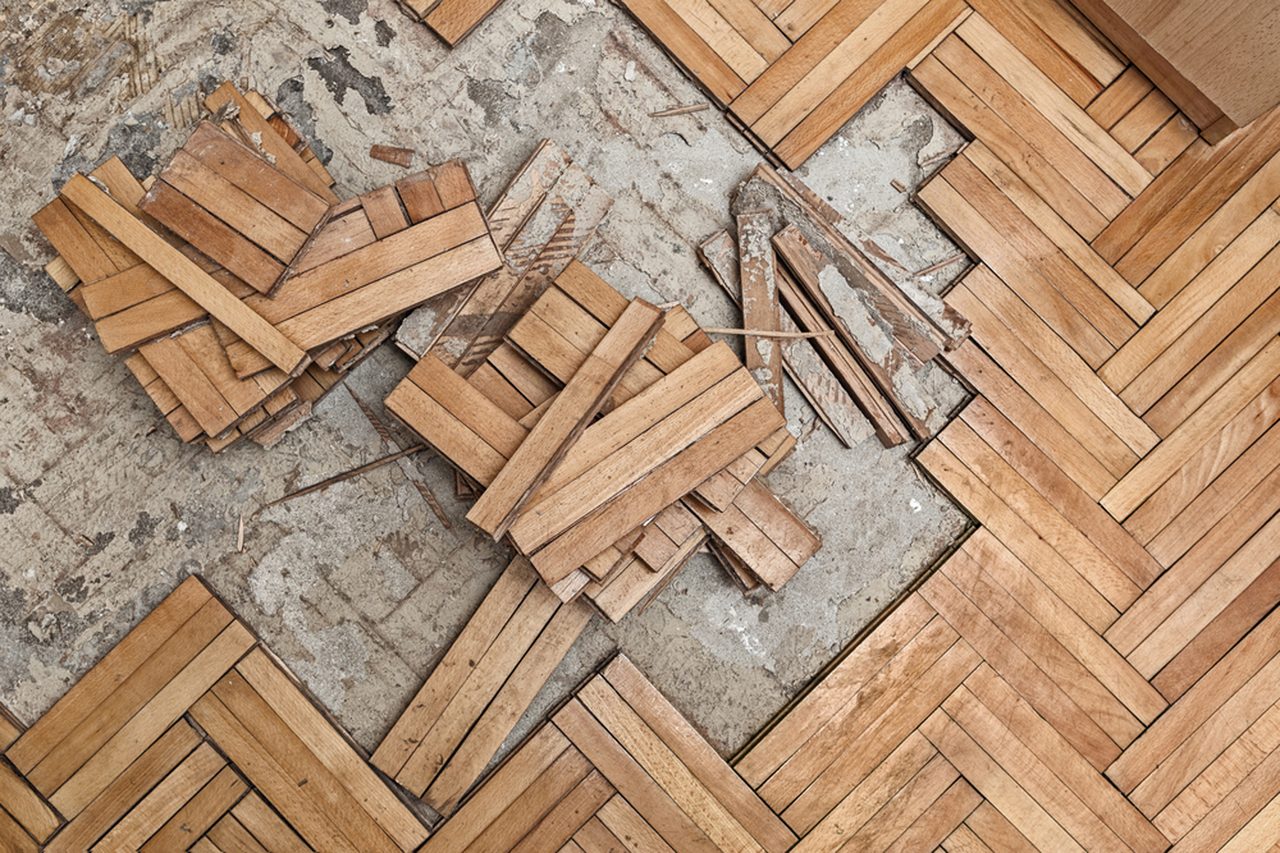Concrete Moisture: Best Practices for Moisture Control
By: John McIntyre
// Sika’s MB moisture barrier mitigates slab moisture ranging from five to 25 pounds per 1,000 square feet per day. Photo: Sika.
Flooring professionals understand that every project is accompanied by factors that must be controlled to prevent failure. Exterior elements like water, air, temperature and vapor must always be taken into consideration and managed to mitigate their destructive effects. Concrete moisture control is one of the more misunderstood, cost-effective and often neglected disciplines in the flooring trade. Experience has shown the disastrous effects of not following the recommended steps to abate high concrete moisture prior to flooring installations.
Where Does Concrete Moisture Come From?
Concrete forms a durable, highly stable substrate for flooring installations when fully cured. The drying process finalizes concrete’s solid properties that make it structurally sound to receive finished flooring. However, the same drying also introduces minute flaws that allow damaging moisture penetration. Water from the original concrete mixture exits the poured surface in vapor form, creating small capillary networks as it goes. The networks become fixed into the slab for the life of the concrete and serve as unintended pathways for moisture below the slab to escape to the surface. When flooring is installed over concrete that lacks adequate moisture control, escaping vapor collects under the finished surface and starts weakening the bond, hosting mold and destroying the installation from underneath.
Moisture that will compromise a flooring installation is generally found in two forms. The first, moisture vapor emissions (MVE), affects all concrete substrates regardless of whether the slabs are below-, on- or above-grade. Water trapped in a blotter layer above a subsurface vapor barrier will find its way to the surface through the slab. So can atmospheric moisture for above-grade slabs in areas with higher relative humidity (RH).
Negative hydrostatic pressure, the second and more aggressive moisture source, affects substrates where water sources meet the underside of the slab surface. Slabs laid below the site’s water table or intruding into a natural water pathway meet frequent, substantial moisture exposure that will begin penetrating the substrate.
Generally, moisture is present at every flooring application site. It is the installer’s responsibility to understand its severity as well as the effectiveness and limitations of moisture-control products needed to mitigate it. Wood flooring products, self-leveling underlayment, floating floors, liquid-applied membranes and resin floors may require a high-quality moisture barrier. Even durable tiling installations demand proper moisture control if the hydrostatic pressure exceeds the tensile strength of the tile bonding adhesive.
// Exterior elements like water, air, temperature and vapor must always be taken into consideration and managed to mitigate their destructive effects. Photo: Sika.

How Can I Tell if Concrete Moisture Will Be an Issue?
Accepted industry tests for determining concrete moisture measurements include Relative Humidity ASTM F2170, Calcium Chloride ASTM F1869 and Tramex ASTM F2669. Moisture vapor emission rate (MVER) test readings and installation material technical data sheets are essential to determining a product’s suitability for site conditions. Moisture-sensitive products may have limitations to how many pounds of water per day per 1,000 square feet they can withstand before separating from the substrate. The good news is there are effective, safe products in the market to address nearly any moisture situation.
How Do I Control Concrete Moisture?
In the past, flooring professionals relied on petroleum-based adhesives. These products were as effective at reducing water vapor emissions as they were toxic so, the industry pivoted to safer water-based adhesives. However, these new products proved insufficient at creating a moisture barrier against slab vapor emissions. To combat water vapor, manufacturers developed waterproofing membranes that bring MVER down to acceptable amounts at flooring installation sites. The membranes are classified by perm ratings, which disclose the rate of water vapor permeating one square foot of waterproofing material. Perm ratings are represented as one grain of water vapor per hour, per square foot, per measurement of mercury. This perm rating determines a membrane’s effectiveness at reducing MVER and helps categorize materials as either vapor retarders or vapor barriers.
Materials with a rating above 0.1 perm are identified as vapor retarders. Membranes not exceeding 0.1 perms serve as effective moisture barriers. As you can see, perm rates are inversely relational to their ability to block vapor — the lower the perm number, the greater the protection and vice versa.
For example, Sika’s MB and MB Redline moisture barriers have a perm rating of 0.06 — one of the lowest in the industry. When applied according to specifications, these products mitigate slab moisture ranging from five to 25 pounds per 1,000 square feet per day. This level of moisture control provides ample protection from bond weakening, microbial growth, cracking, curling, peeling, staining, efflorescence and a host of other conditions that point to project failure.
Compensating for water vapor may seem unnecessary to the less experienced in our industry. It’s virtually imperceptible to our senses and, without proper testing, may not make its presence known until too late. Exercise due diligence. Know your environment and choose materials accordingly. The effort will prove well worth it to keep trouble from rising to the surface.

John McIntyre is a national technical manager for Sika. His construction professional experience began in his teens and has taken him through all avenues of the tiling industry. Following nearly a decade in tile materials distribution and manufacturing, McIntyre served in technical sales for tile setting materials manufacturer Merkrete until 2020. Aside from his duties at Sika, McIntyre devotes his time evaluating CTIs for CTEF.
About the Author >>
